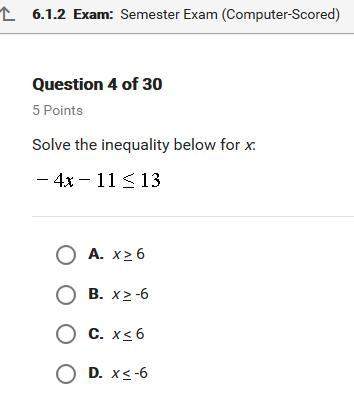Dilations .
1) are rigid motions because size and shape is preserved
2) are not rigid mo...

Mathematics, 18.12.2020 14:00 thedocgalloway
Dilations .
1) are rigid motions because size and shape is preserved
2) are not rigid motions even though shape is preserved because size is not preserved

Answers: 1


Another question on Mathematics

Mathematics, 21.06.2019 19:30
Suzanne began a trip with 18 1/2 gallons of gas in the gas tank of her car if she hughes 17 3/4 gallons on the trip how many gallons does she have left once she finish the trip
Answers: 1

Mathematics, 21.06.2019 20:30
The graph of y x3 is translated so that the point (1. 1) is moved to (1, 4). what is the equation of the new graph?
Answers: 1

Mathematics, 21.06.2019 22:20
Igure 1 and figure 2 are two congruent parallelograms drawn on a coordinate grid as shown below: 4 quadrant coordinate grid showing two parallelograms. figure 1 has vertices at negative 5, 2 and negative 3, 4 and negative 4, 7 and negative 6, 5. figure 2 has vertices at 5, negative 2 and 7, negative 4 and 6, negative 7 and 4, negative 5. which two transformations can map figure 1 onto figure 2? reflection across the y-axis, followed by reflection across x-axis reflection across the x-axis, followed by reflection across y-axis reflection across the x-axis, followed by translation 10 units right reflection across the y-axis, followed by translation 5 units down
Answers: 1

Mathematics, 22.06.2019 00:00
Ascientist studied a population of workers to determine whether verbal praise and/or tangible rewards affect employee productivity. in the study, some workers were offered verbal praise, some were offered tangible rewards (gift cards, presents, and some were offered neither. the productivity of each participant was measured throughout the study by recording the number of daily tasks completed by each employee. which inference might the scientists make based on the given information? a.) the number of daily tasks completed by each employee may influence the dependent variable, which is whether the employee receives verbal praise, tangible rewards, or neither. b.) verbal praise and/or tangible rewards may influence the independent variable, which is the number of daily tasks completed by each employee. c.) verbal praise and/or tangible rewards may influence the dependent variable, which is the number of daily tasks completed by each employee. d.) the dependent variables, which are verbal praise and tangible rewards, may influence the number of daily tasks completed by each employee.
Answers: 1
You know the right answer?
Questions

Chemistry, 17.09.2019 16:20

Mathematics, 17.09.2019 16:20


Mathematics, 17.09.2019 16:20

Physics, 17.09.2019 16:20



History, 17.09.2019 16:20


Mathematics, 17.09.2019 16:20

Mathematics, 17.09.2019 16:20


Mathematics, 17.09.2019 16:20


Mathematics, 17.09.2019 16:20

Social Studies, 17.09.2019 16:20


Mathematics, 17.09.2019 16:30

Mathematics, 17.09.2019 16:30

History, 17.09.2019 16:30




